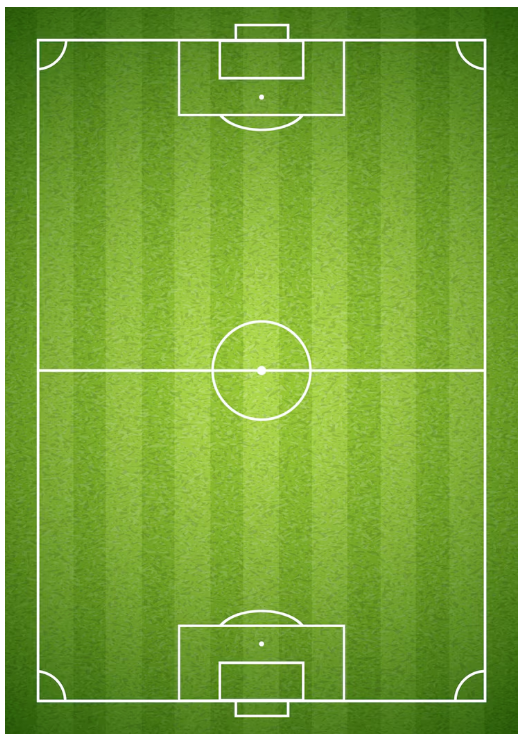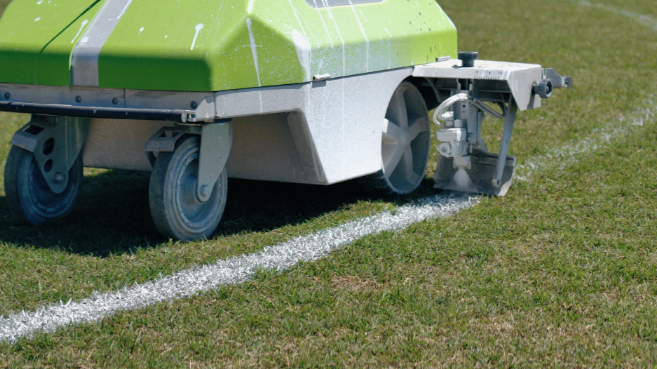When it comes to Football, better called Rugby for the rest of the world, it really wins the popular sports card in America. The game thrills the dopamine of almost half of the United States, but there is more to it than just chasing a ball. It requires strategic moves and agility.
Players and coaches need to know the dimensions, but fans do, too, to get the most from the game. Whether for match preparation, field maintenance planning, or just a sense of curiosity, one would want to know the measurements of an exact football field.
In this article, you will see the full extent of a football field step by step. Then, you will fully understand what constitutes that fabulous playfield.
Basics on Dimensions of Football Field

A standard American football field is a rectangle covered with either natural grass or artificial turf. The sizes of professional, college, and high school levels are the same, except for a few differences in every specific element, mainly hash marks.
The typical dimensions of a football field are as follows:
- The length of a football field is 120 yards (360 feet), measured from the corner of one zone to the end of the other.
- The width of such a field is almost 53.3 yards (or 160 feet) wide.
- The Playing Area, excluding the end zones, is 100 yards long.
- The total surface area of such a football field is approximately 57.600 square feet, almost 1.32 acres.
Typically, these are the standard dimensions maintained across all football fields to provide a fair and leveled game.
Also Read: 12 Everyday Things That Are 2 Centimeters Long
Breaking Down The Football Field: Section by Section
1. The Field of Play
The field of play is the middle area between the two end zones. It is where most action happens because teams move the ball toward their opponent’s end zone to score points. The field of play measures 100 yards in length and is 53.3 yards wide.
The boundary is demarcated by yard lines, hash marks, and sidelines. These help the players, officials, and crowd keep track of the play.
2. End Zones
The end zones at each end of the football field are areas where the teams attempt touchdowns. Both end zones run from one end of the field to the other (53.3 yards) and are 10 yards deep.
Goal lines mark the line from which end lines delimit the end zone, enclosing what is designated as the outer limit. The end zones are the variable factor that determines scoring for the players. You can score in the end zones by touchdowns, safeties, and field goals.
3. Field Lines
The yard lines split the field into sections, making measuring progress and mark plays easier. Altogether, there are 98 yard lines, with 1 yard between every line. Field numbers are marked along every 10 yards to enable players and officials to easily locate their position on the field.
Such numberings start 10 yards away from each goal line and cover the entire length into the middle to meet up at the 50-yard line, dividing the field into two halves. The yard lines are an important visual reference in ascertaining whether the team has made a first down or advanced to the end zone.
4. Sidelines and End Lines
The outer border lines of the football ground are the sidelines and the end lines. The sidelines follow the length of the field (120 yards) and are on both the right and left sides of the playing field. Sidelines ensure no player leaves the area of play while playing. These lines are behind each end zone and extend 53.3 yards wide. A play is out of bounds if the player crosses over that line without scoring.
Also Read: How Long is 15 CM? 9 Common Things That Are 15 Centimeters Long
5. Goal Lines
The goal lines are 10 yards away from the end lines, marking where a dividing line exists when trying to score touchdowns. In order to do so, a player must either cross over the ball across the dividing line or catch it within the end zone of his half. Like the end lines, goal lines run 53.3 yards across the field.
6. Hash Marks
Small parallel dashes running along the width of the field are called hash marks, and an important role in marking specific spots where plays start is played. All hash marks are 24 inches long and 4 inches wide.
Placement differs with the type of game that is happening. In high school matches, hashes are 53 feet and 4 inches apart.
In college games, they are 40 feet apart. In the main NFL games, it is narrowed down to 18 feet, 6 inches. The hash marks indicate to referees and players where to place the ball when taking snaps and free kicks.
7. Goalposts
Inside each end line are the goalposts, from which teams take their attempts when trying to score a field goal or extra points. The crossbar of this goalpost stands 10 feet off the ground while only upward goes the vertical post. In the NFL, the distance between the two vertical posts is 18 feet 6 inches in college football, while that is 23 feet 4 inches.
Marking a football field is all about precision.They should be highly accurate in dimensions to paint the football field correctly. Even a line should be done with measured units based on standard dimensions so that it can have a fair game, which is labor work taking hundreds of hours of manpower.
Also Read: How Long Is 12 Inches? 10 Common Things That Are 12 Inches Long
Modern Solution: Line Marking Robots

The line-marking crisis is easy to solve thanks to technological innovations like the Turf Tank robot. What is special about these robots are:
- Using GPS technology to ensure precise measurements.
- Painting perfect lines in less time than what it would have taken to do it manually.
- It reduces the workload of field managers in maintaining accuracy.
Why Football Field Dimensions Matter
Football Field Dimensions matter in a match for a lot of reasons. It is also important to hold knowledge and ideas of these standard dimensions. Here are some areas on how it helps in a match:
- For Players and Coaches: It helps decide where players may line up. Guides strategic planning based on field layout.
- For Fans: It enhances knowledge of the game. It apparently explains where the plays take place and what they symbolize.
- For Field Maintenance Teams: Ensures compliance with league regulations. It ascertains a professional playing surface.
Also Read: How Long is 2 Inches? 10 Common Things That Are 2 Inches long
Conclusion
The football field is much more than that piece of grass. It is a carefully measured arena and is designed to stage the country’s favorite game: Football. It has a particular place in this game from the field of play down to the end zones.
Sitting in the stands or marking the field for the next game, knowing the size of a football field bears added knowledge in the appreciation of football. With modern technology, such as line-marking robots, perfect dimensions are easily done, hence the maintenance of integrity in the game as it provides for players a stage to perform at their best. Knowing now how big a football field is, you can enjoy the game of football with so much more appreciation for its minute details that make the game so thrilling.




